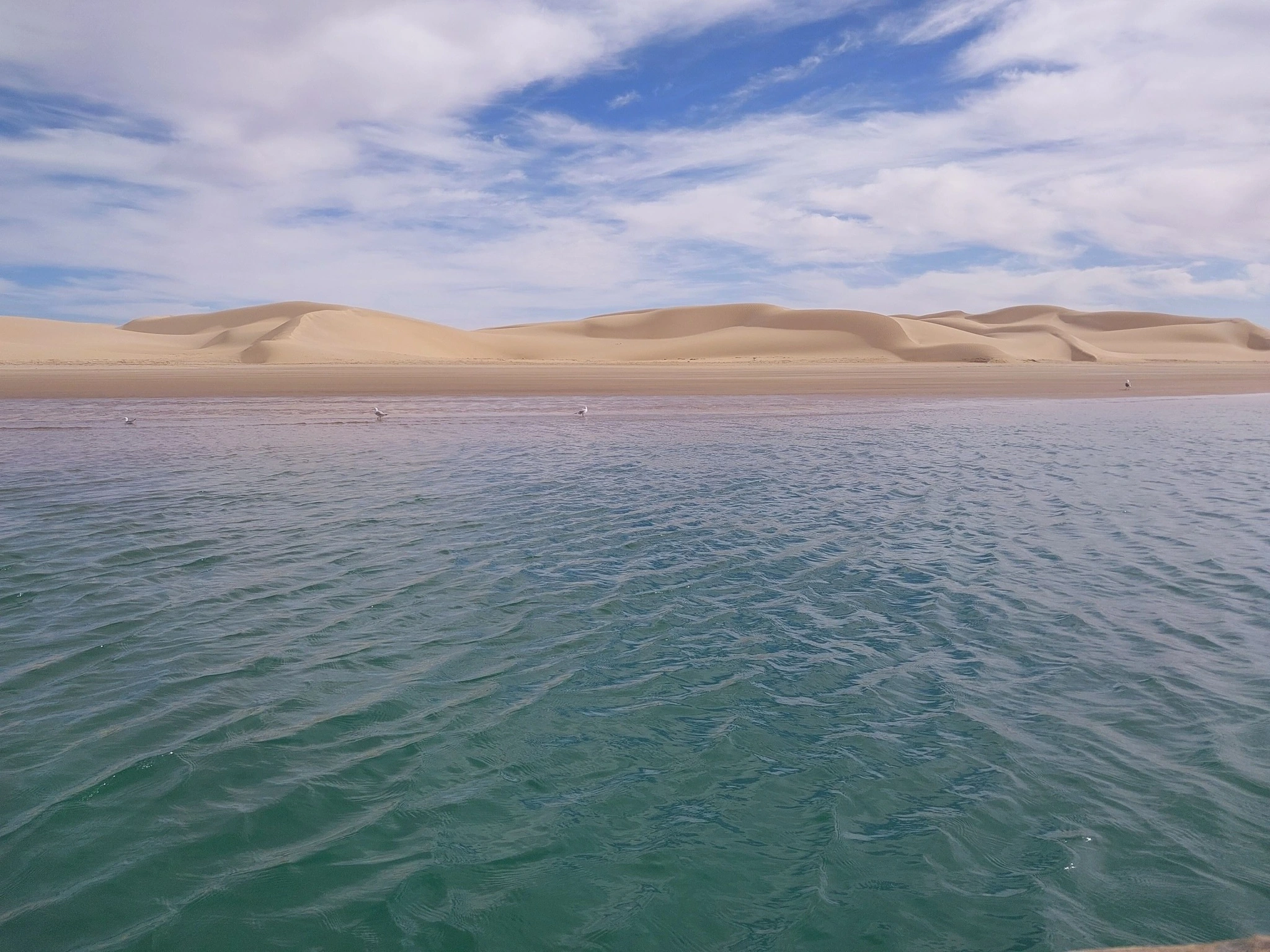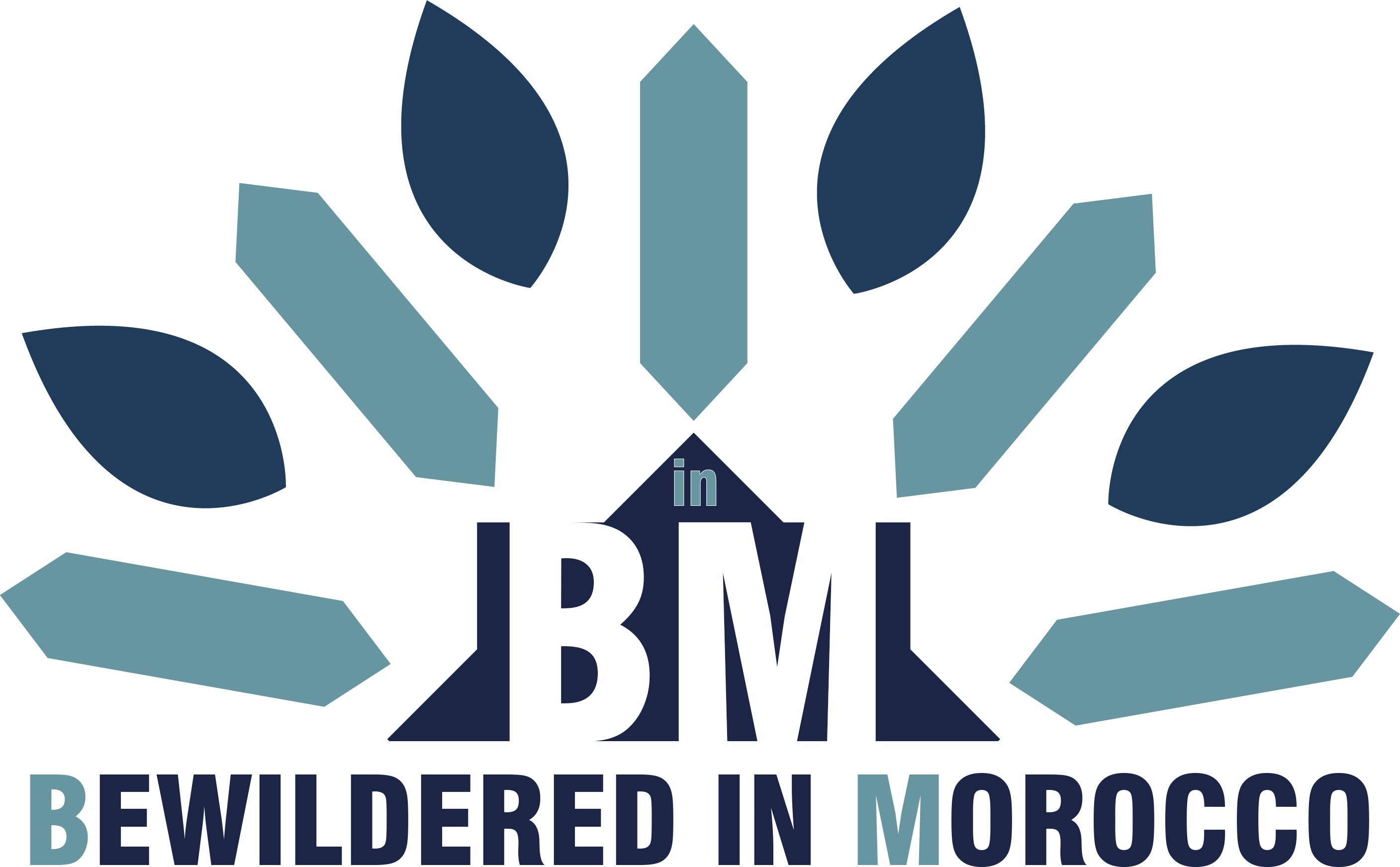When people think of Morocco, they picture bustling souks in Marrakech or the blue streets of Chefchaouen. But tucked away in the southwestern corner of our beautiful country, where golden desert dunes kiss the Atlantic waves, lies one of Morocco's best-kept secrets: Naïla Lagoon. This isn't just another pretty spot on the map—it's a place where nature has created something truly magical.
Last year, I finally made the journey to this remote paradise, and what I discovered left me speechless. Picture this: a 20-kilometer stretch of shimmering water surrounded by rolling sand dunes, where over 20,000 migratory birds gather each winter, and where the silence is so profound you can hear your own heartbeat. This is Naïla Lagoon, and it might just be the most spectacular place you've never heard of.
The Crown Jewel of Khnifiss National Park

Naïla Lagoon sits at the heart of Khnifiss National Park, Morocco's first Saharan national park and a true testament to our country's commitment to preserving its natural heritage. Located 200 kilometers north of Laâyoune, between the towns of Tan Tan and Tarfaya, this coastal oasis spans an impressive 185,000 hectares of pristine wilderness.
What makes this place so special? Imagine standing on golden sand dunes and looking down at a brilliant blue lagoon that stretches as far as the eye can see. To your west, the endless Atlantic Ocean crashes against the shore. To your east, red sandstone cliffs rise dramatically from the water. It's like nature decided to show off and created the most beautiful postcard scene you could imagine.
The lagoon itself measures 20 kilometers long and only a few hundred meters wide, creating this incredible ribbon of water that cuts through the desert landscape. During high tides, the water extends inland through a deep depression, forming what locals call a "guelta"—a temporary desert pool that supports rare Saharan vegetation.
A Living Museum of Ancient History
Walking around Naïla Lagoon is like stepping back in time. Archaeological excavations have uncovered circular structures and fortresses dating back 3,000 to 6,000 years, proof that this area has been attracting people for millennia. Local guides still tell stories passed down through generations about camel caravans and Saharan fishermen who would gather here to access fresh water from the salt wells and trade marine and desert products.
These ancient connections make perfect sense when you experience the lagoon yourself. Even today, it feels like a natural meeting point—a place where the harsh beauty of the Sahara softens into something more welcoming and life-giving.
The site earned recognition as a Ramsar wetland of international importance in 1980, acknowledging its crucial role for migratory birds and marine biodiversity. In 1998, Morocco's Direction of Cultural Heritage added the lagoon to UNESCO's World Heritage tentative list, hinting at future world heritage status. Finally, in 2006, the entire area received official protection as Khnifiss National Park.
A Birdwatcher's Paradise Beyond Imagination
If you love wildlife, Naïla Lagoon will absolutely blow your mind. This place hosts 179 bird species—more than most countries can claim! During my visit, I watched thousands of flamingos paint the lagoon pink as they fed in the shallow waters. It was like witnessing nature's own art installation.
The lagoon serves as a crucial stopover for migratory birds traveling along the Western Palearctic route. In winter, over 20,000 waterfowl call this place home temporarily. What's even more incredible? Khnifiss Bay ranks as the world's second most important site for flamingos globally. Yes, you read that right—the second most important in the entire world!
During my boat trip across the lagoon, our local guide Mouloud pointed out magnificent white spoonbills gracefully wading through the shallows. We spotted Audouin's gulls, terns, and the impressive osprey hunting in the lagoon waters. The diversity here includes globally significant species like the Caspian Tern, Grey Heron, and Marbled Duck.
But it's not just about the big, colorful birds. I was fascinated watching flocks of sanderlings—small shorebirds that move together like a perfectly choreographed dance troupe across the mudflats and sandy beaches. The way they suddenly change direction in unison is mesmerizing.
The Incredible Ecosystem of Naïla Lagoon
What truly amazed me about Naïla Lagoon is how much life thrives in this seemingly harsh environment. The lagoon supports around 30 species of algae and approximately 70 species of vascular plants, including some that exist nowhere else on Earth.
The biodiversity extends far beyond birds. The park is home to 27 mammal species, 140 marine invertebrates, and 17 reptiles and amphibians. During our exploration, our guide mentioned sightings of the rare Cuvier's gazelle in the terrestrial parts of the park—though we weren't lucky enough to spot one ourselves.
The lagoon's unique position creates multiple habitats within a single ecosystem. You have the salt flats (sebkhas) supporting specialized desert vegetation, the lagoon waters teeming with marine life, coastal dunes protecting rare plants, and inland areas where traditional Saharan flora flourishes.
Planning Your Adventure to Naïla Lagoon
Getting to Naïla Lagoon requires some planning, but trust me—it's worth every bit of effort. The lagoon sits about 70 kilometers north of Tarfaya, accessible via the main highway to Laâyoune. The good news? Entry to Khnifiss National Park is completely free.
However, here's what you need to know before you go: many routes around the park are sandy and unpaved, so you'll definitely need a four-wheel-drive vehicle. Don't even think about attempting this journey in a regular car—you'll get stuck in the sand faster than you can say "Sahara."
When you arrive, pay attention to local authorities and park personnel regarding closing hours and the best routes to take. They know this terrain better than anyone, and their advice could save you from getting lost in the desert.
The Best Way to Experience the Lagoon
The most magical way to explore Naïla Lagoon is definitely by boat. During my visit, we climbed aboard a traditional barque with Mouloud, our local guide, and spent the afternoon cruising along the lagoon's edge. We started by following the cliff face, then crossed to the sandbanks where hundreds of flamingos were feeding.
But here's the catch—and this is important—boats and boatmen are in short supply. You absolutely must book your boat excursion in advance. Don't just show up expecting to hop on a boat; you'll likely be disappointed.
The boat trip allows you to get close to the wildlife without disturbing the birds, and you can access parts of the lagoon that are impossible to reach on foot. Plus, the perspective from the water gives you the full scope of this incredible landscape.
Fishing Paradise in the Desert
For fishing enthusiasts, Naïla Lagoon offers some of the most unique angling experiences in Morocco. The lagoon and surrounding waters are home to sea bass, striped bass, wolf perch, and white seabream, among others. The contrast of casting your line in desert surroundings while catching ocean fish is surreal.
If you want to try your luck, you'll need to get a fishing permit from Akhfenir first. Stock up on sardines for bait—your best bet is to buy them in Tan-Tan center or at Tan-Tan Beach before heading to the lagoon.
What I loved about fishing here is the complete tranquility. No crowds, no noise—just you, the water, and the occasional bird call echoing across the lagoon.
Practical Tips for Your Visit
Visiting Naïla Lagoon requires some preparation, especially given its remote desert location. Here's what I learned during my trip:
When to Visit: Avoid the brutal summer heat if possible. The Sahara can reach dangerous temperatures during summer months, so plan your visit during cooler periods from October to April.
What to Bring: Pack plenty of water and food—there are virtually no amenities in the park. Bring sun protection, comfortable walking shoes, and don't forget your camera. The landscapes here are absolutely incredible.
Respect the Environment: This is crucial. Stay on designated paths and respect boundaries around bird sanctuary areas. The ecosystem here is delicate, and it's our responsibility to preserve it for future generations. Absolutely no littering—pack out everything you bring in.
Accommodation: While camping isn't permitted in the park itself, you can stay at nearby guesthouses. The Courbine d'Argent, located on a beach near the park, offers direct sea access and authentic Moroccan hospitality. The owners know the area intimately and can help arrange your lagoon excursion.
Why Naïla Lagoon Should Be on Your Morocco Bucket List
Standing on the dunes overlooking Naïla Lagoon as the sun set, painting the water gold and the sky purple, I understood why this place has been attracting travelers for thousands of years. It's not just the stunning beauty—though that alone is worth the journey. It's the sense of discovering something truly special, something that feels untouched by mass tourism.
This isn't your typical beach destination or mountain getaway. Naïla Lagoon offers something entirely different: a chance to witness one of the world's most important bird migration sites, explore ancient archaeological remains, and experience the profound silence of the Sahara—all in one incredible location.
The lagoon represents everything I love about Morocco: natural beauty, rich history, cultural significance, and warm hospitality all wrapped together in one unforgettable experience.
Conservation and the Future
What makes me proud as a Moroccan is seeing how seriously we take conservation at Naïla Lagoon. The creation of Khnifiss National Park in 2006 marked Morocco's commitment to protecting this unique ecosystem for future generations.
The park serves as a model for responsible ecotourism in Morocco. Visitors can appreciate the incredible beauty while following strict conservation guidelines that ensure the lagoon remains pristine. It's this balance between accessibility and protection that makes the site so special.
Your Turn to Discover This Hidden Gem
Naïla Lagoon changed my perspective on what Morocco has to offer beyond its famous imperial cities and mountain ranges. This lagoon proves that our country holds secrets that can rival any destination in the world.
Have you ever been to a place that completely surprised you? Where the reality exceeded even your wildest expectations? That's exactly what Naïla Lagoon delivered for me, and I have a feeling it will do the same for you.
If you're planning a trip to southern Morocco, or if you're someone who loves off-the-beaten-path destinations where you can connect with nature and history simultaneously, this lagoon deserves a spot at the top of your list.
What's your most memorable encounter with wildlife during your travels? Have you ever visited a place that felt like a well-kept secret? Share your stories in the comments below—I'd love to hear about your own hidden gem discoveries!
